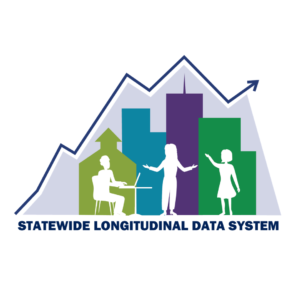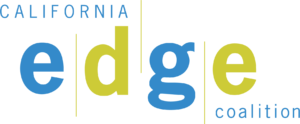Legislative Report #1
EDGE’s Summary

In December 2020, the Cradle-to-Career Data System Workgroup submitted its first report to the Legislature, outlining a proposed plan intended to develop and establish for the first time in California a statewide longitudinal data system – a critical tool that would ensure existing education, financial aid, social service, and workforce information is fully leveraged to improve outcomes for all students from “cradle to career.” EDGE has been actively involved throughout the planning process, ensuring that the integration of data is public-facing, transparent, secure, and includes the adult learner and worker voice. The implementation of this data system will assist Californians in determining what schools and programs are best suited for them to meet their career and/or educational goals – taking into account success rates as well as tuition and non-tuition costs. Further, the data system will provide researchers, policymakers, and advocates with valuable data to identify successes, concerns, trends, equity gaps and disparities that need to be addressed.
The Workgroup, which is composed of various state agencies that would be inputting the data into the system, provides specific recommendations in the report such as what the governance structure could look like, the type of data that will be included in the first phase, what the process will be to access the data, and what the timeline and costs are estimated to be. In addition to the Workgroup, various advisory boards and subcommittees, which are composed of researchers, data experts, and advocacy groups, were also able to provide recommendations to the Workgroup. Some of those ideas are reflected in the report. Below is a summary of the legislative report highlighting some of the main goals, type of data that will be accessed, proposed structure of the system, and EDGE’s recommendations to strengthen the data system.
Data System Goals
As we’ve seen over the last year, the pandemic has unveiled significant inequities within our education and workforce systems — students having to drop out due to socioeconomic barriers and struggling with distance learning; dislocated workers losing their jobs, losing their healthcare, and not having enough support services to complete their training programs. The list of barriers and inequity goes on. As explained below, given the heightened focus on the need to better support California’s most underserved populations, this data system will play a critical role in addressing these issues. Moreover, the data system’s purpose is to serve a broad range of audiences, while also expanding access to tools and services to navigate the education to employment pipeline. By having the integration of K-12, higher education, social services, financial aid, workforce training, and employment data in a secure system, the State will be able to:
● Identify the various types of support that are needed to assist students in the classroom and to prepare for college or other career pathways that will eventually lead them to quality and sustainable jobs.
● Provide quality information to families and students, as well as adult learners, to better identify educational and workforce opportunities, and make decisions that best meet their goals.
● Assist state agencies to improve educational, workforce, as well as health and human services programs to best serve the needs of Californians.
Types of Data
Under the proposed phase one, which is the phase that will build out the system and lay the foundation, the intent is to link existing K–12, public postsecondary, employment, and financial aid data. There were over 160 data points identified by the Workgroup and advisory groups related to critical milestones in a student’s progress through the education system, financial aid impacts, and living-wage attainment, including student debt information, employment earnings, and course characteristics like career technical education. Phase one would also include apprenticeship data, early learning, and some social service programs. EDGE appreciates that apprenticeship and other workforce training data were added to the proposed recommendations, as there are many adult learners across the State who seek alternative career pathways other than four-year institutions. EDGE was a strong advocate for the inclusion of this critical data component and we look forward to seeing this information grow and evolve within the system. The report makes clear that adding these types of data points will pave the way to expand information on private and independent colleges, workforce training programs, health services, and social services to be included towards the end of phase one. Phase one is expected to be completed within five-years.
Data System Structure and Accessibility
The report recommends that the Cradle-to-Career Data System should be governed by a board made up of the state agencies providing the data and stakeholders who plan to use the information. The agencies would hold two-thirds of the seats and one-third would be provided to stakeholders appointed by the Governor and Legislature. The governing board would be responsible for overseeing the system and ensure it is supporting the State’s goals referenced above. For decision-making purposes, there will be a two-thirds majority vote. In addition to the governing board, two advisory boards would also be created: Data and Tools Advisory Board would ensure the system includes actionable data and identify ways to improve access to the data, and the Community Engagement Advisory Board would ensure that the intended audiences are aware of the system and know how to use the information. This year, EDGE is proudly serving on the Community Engagement Subcommittee, which will be responsible for developing recommendations for the second legislative report regarding how to create mechanisms for strong feedback loops with data users, support evidence-based decision making and analytical capacity, and ensure equitable access to actionable information.
Additionally, the creation of a managing entity is being recommended. The governing board would oversee the managing entity, which would be a new program living within the Government Operations Agency (GovOps). The managing entity would be responsible for implementing the data system, including assisting data providers to upload information, linking data, overseeing the development of the dashboards, and producing summaries of key student and employment outcomes, and assist the public to access and understand the information.
In terms of data accessibility, the report recommends streamlining access to information not available in the dashboards and a query builder. For example, someone requesting access to the data could use an expedited process to receive a summary that will not reveal student identities. For others that are authorized to access specific student-level data, they would follow a comprehensive review process that would include privacy protections and legal agreements that uphold State and Federal laws, and ensure students within the system will not be identified.
Timeline
As mentioned, phase one is expected to be completed within a five-year timeframe, with the following deliverables:
● Year One: Establish governance structure; analytical data sets that are focused on K–12, public-postsecondary, financial aid, and employment information; and design public-facing tools.
● Year Two: Launch the public-facing tools (dashboards and query builder) to train the public on how to use data tools, expand access and upgrade electronic transcript infrastructure for competency-based education and social service eligibility tools.
● Year Three: Expand analytical data for independent and out-of-state colleges, and provide access to college planning tools.
● Year Four: Expand analytical data set to cover private colleges and early childhood learning.
● Year Five: Expand analytical data in workforce training information, health, and social services – then plan for phase two.
EDGE Recommendations
As California continues its work on the development and implementation of the longitudinal data system, EDGE would like to continue to elevate key recommendations, many of which are currently underway, and encourage the Workgroup and State leaders to prioritize the following:
● Ensure the data system is user-friendly and public-facing, transparent, secure, and includes the adult learner and worker voice. The State needs to provide quality information that is accessible for adult learners and dislocated workers, particularly individuals who have been impacted by COVID-19 and are seeking to return into the education and workforce system to upskill and obtain new credentials. These underserved populations face significant barriers to economic mobility and the data system must be a tool to provide them access to educational resources, while also assisting researchers, policymakers, and advocates to understand and identify disparities within the education and workforce systems and improve program/institutional effectiveness.
● Support the inclusion of pre-apprenticeship, apprenticeship, and other workforce training program data. As mentioned, we appreciate the Workgroup recognizing the importance of including apprenticeship data into phase one, since many adult learners and dislocated workers are seeking new opportunities to upskill and obtain credentials. This data will also help inform post-secondary institutions and workforce training providers to advance quality programs and inform policymakers to evaluate the strengths and weaknesses of the State’s current programs.
● Support a governing structure that is reflective of California’s diverse population and needs. This should include key stakeholders that can contribute to the data system’s decision-making process and individuals impacted most by the economic downturn such as students, parents, adult learners, workers, industry partners, etc. Thus far, the report proposes a governing board consisting of 12 seats held by state agencies contributing the data and 6 seats reserved for the public (2 of which are designated for K-12 representatives). We understand there will be ongoing discussions on this topic and we remain committed to working with the Workgroup and stakeholder partners to find an equitable governing structure for all.
Next Steps
The recommendations from the legislative report will be carried through the legislative and budget processes. The Workgroup and subcommittee meetings resumed in January 2021 to continue the development of the system.
The public continues to have the opportunity to engage as these meetings are broadcasted live via Zoom. To stay informed on upcoming meetings, provide public comment, and view the latest informational materials, visit the WestEd website.
EDGE looks forward to continued collaboration with the Workgroup, Legislature, Administration, and stakeholder partners as the data system continues to grow and evolve and is committed to ongoing advocacy to ensure the data is implemented, secure, and accessible for all Californians.
